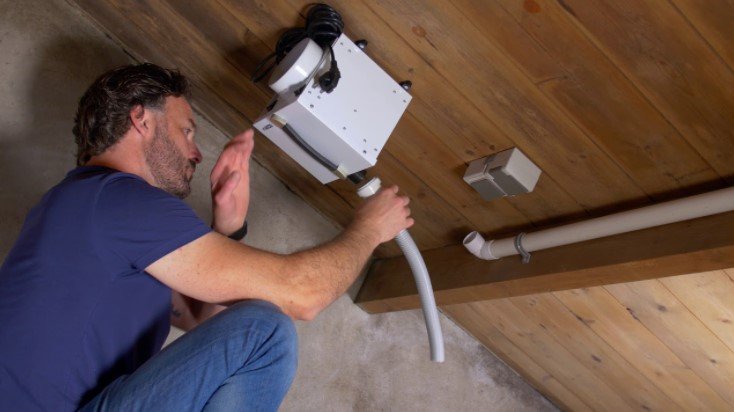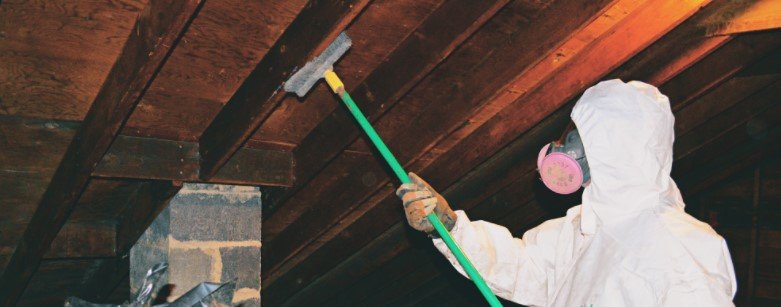Can I put a dehumidifier in my attic? It’s one of the most frequently asked questions we’ve received lately. Well, the official answer is YES you can put a dehumidifier on your attic to remove moisture from the surrounding environment.
A dehumidifier is an excellent and effective solution to get rid of moisture issues from your attic. However, you have to consider the size, power capacity, dampness level in the attic, noise, tank size, and many more things.
After getting a dehumidifier, place it in the center of your attic so that it can remove moisture evenly. Learn how to put the dehumidifier, where to place it, and other related aspects throughout this article.
Can I Put A Dehumidifier In My Attic?
Do you know why condensation or moisture occurs in the attic? Common reasons are inadequate ventilation, faulty air conditioner, storing firewood, and a poor barrier between the attic and living space, etc.

Several factors may contribute to producing moisture in the attic, but the moisture can be removed easily. You can use a dehumidifier to get rid of moisture from your attic. Using dehumidifiers for attic can significantly help to draw the moisture effortlessly.
A dehumidifier is an innovative device that can bring the moisture down and reduce musty odors as well. The use of a dehumidifier can also help to eliminate allergy symptoms like mold, dust mites, pollen, and animal dander.
Where Should I Place A Dehumidifier In The Attic?
The proper placement of the dehumidifier is crucial because it can impact the moisture removal procedure. The wrong placement of dehumidifiers can deprive the user of the desired results. Learn about the proper dehumidifier placing or installing procedure by following the below section:

1. Choose the Right Dehumidifier
Before installing a dehumidifier, one thing you need to make sure of is choosing the right dehumidifier for your attic. Since these are not all made with equal power or output, you need to select the perfect one based on your space size. Here we’ve included a chart that might help you to choose the right size dehumidifier for you:
| Condition of your space | 300 sq. ft. | 500 sq. ft. | 800 sq. ft. | 1200 sq. ft. |
| Slightly damp
50-60% humidity |
20 pint | 25-30 pint | 35-40 pint | 50 pint |
| Moderately damp
60-70% humidity |
20 pint | 25-30 pint | 35-40 pint | 50 pint |
| Very damp
70-80% humidity |
25 pint | 30 pint | 45 pint | 55 pint |
| Wet
80-100% humidity |
25-30 pint | 35-40 pint | 45-50 pint | 60 pint |
Above we’ve mentioned the 2020 and new additions dehumidifier sizing chart that you can follow for your attic. You’ll need a different size dehumidifier if you have or purchase old dehumidifiers.
2. Select the Right Location
Selecting the right location to place the dehumidifier should be the most important thing you need to pay attention to. The right placement will ensure the proper output of the moisture removal process from the attic. Here are some principles that you can follow to place the dehumidifier properly-
- You need to place your dehumidifier on the floor with a good air circulation.
- Choose a place with proper access to electricity.
- Never place the dehumidifier near the source of dust, lint, or any air pollution particles.
- Do not place the moisture remover against a wall or any type of furniture.
- The ideal option for putting a dehumidifier is in your location’s central space.
3. Give Attention to the Drainage Method
You must consider the drainage method if you’re not using a dehumidifier with an automatic drain tank. Attach the water hose to the dehumidifier’s drain pump hole and the other side on a sink or drain. The improper water drainage system can significantly impact the performance of the dehumidifier.
4. Set Your Preferable Humidity Level
Once the dehumidifier has been accurately installed, you are ready to power up the machine. Plugin the dehumidifier and set your desired humidity level. If you’re wondering what the perfect humidity level will be, it is 35 to 50%.
5. Empty the Water Tray
Always determine when to empty the water because it can interrupt the moisture removal process from the attic. You need to check the water tank regularly and drain the water if required. Also, try to wash the water tank once or twice a month to keep the tank clean.
Tips For Drying Out a Wet Attic
Alongside using the dehumidifier, do you also want some types for drying out your wet attic? In that case, simply follow the below section. Here we’ve included some of the ways that you can follow to reduce moisture from the attic.

- First, locate the humidifier source and clean the area up with an absorbent towel.
- Now, place a dehumidifier near the source of water or humidity.
- Set the dehumidifier in 30-50 percent to remove the moisture and have fresh, breathable air.
Conclusion
Among many solutions, using a dehumidifier is one of the effective solutions to remove moisture from the attic. A dehumidifier will reduce and maintain the perfect humidity level to ensure comfortable and healthy breathable air. Moisture build-up inside of your attic can cause many issues.
Sometimes, excessive moisture can even lead to rot and corrosion, endangering the structural integrity of your home. Therefore, this issue requires attention to trim any further issues. Since you know how a dehumidifier removes moisture, you don’t have to go anywhere and ask Can I put a dehumidifier in my attic or not.
